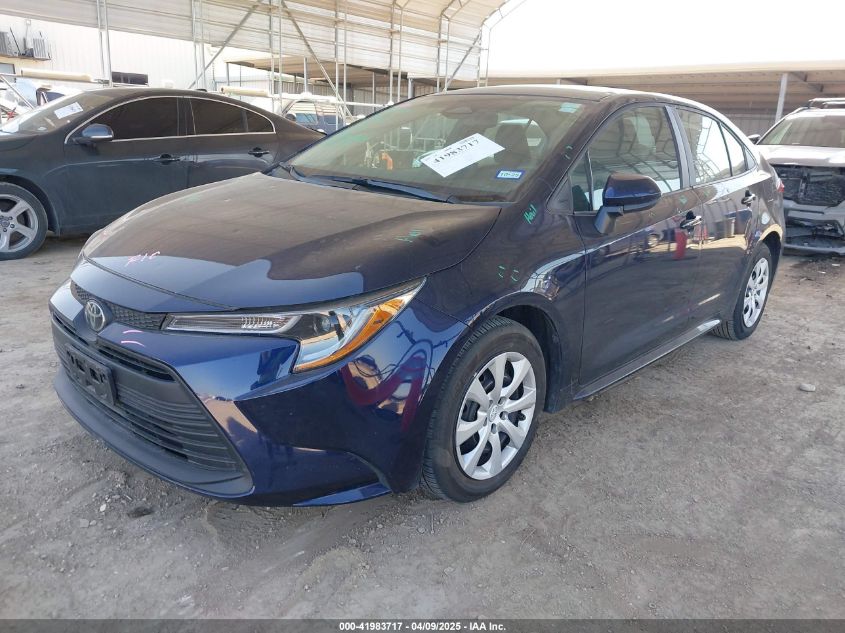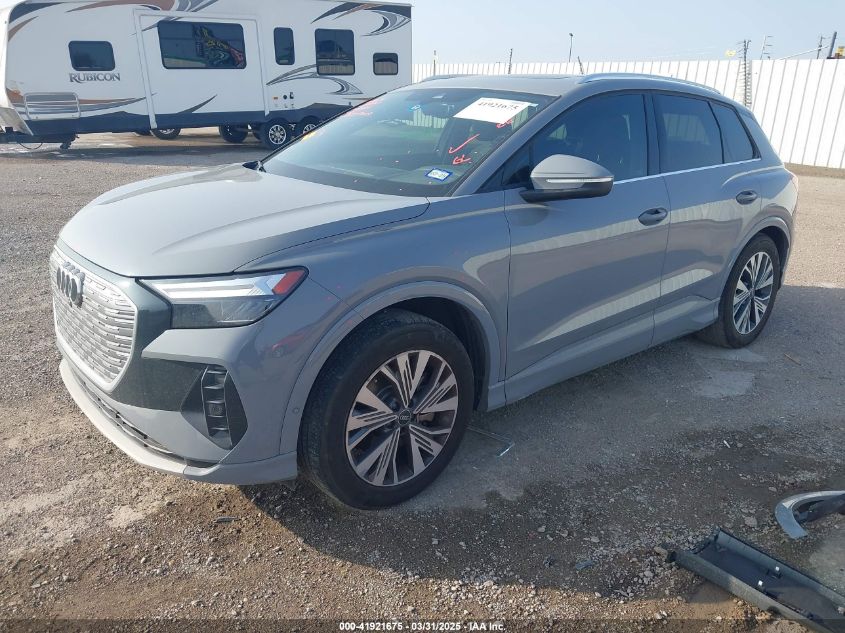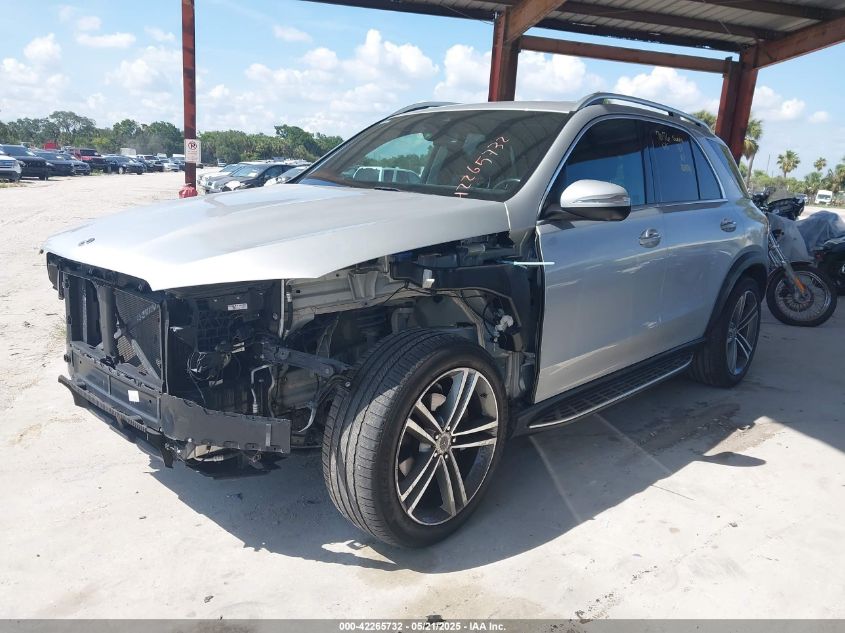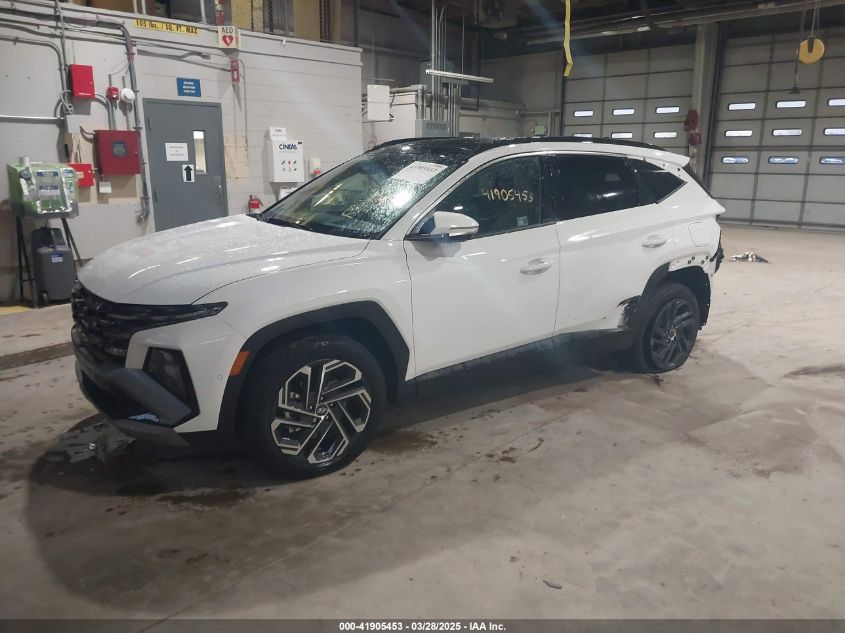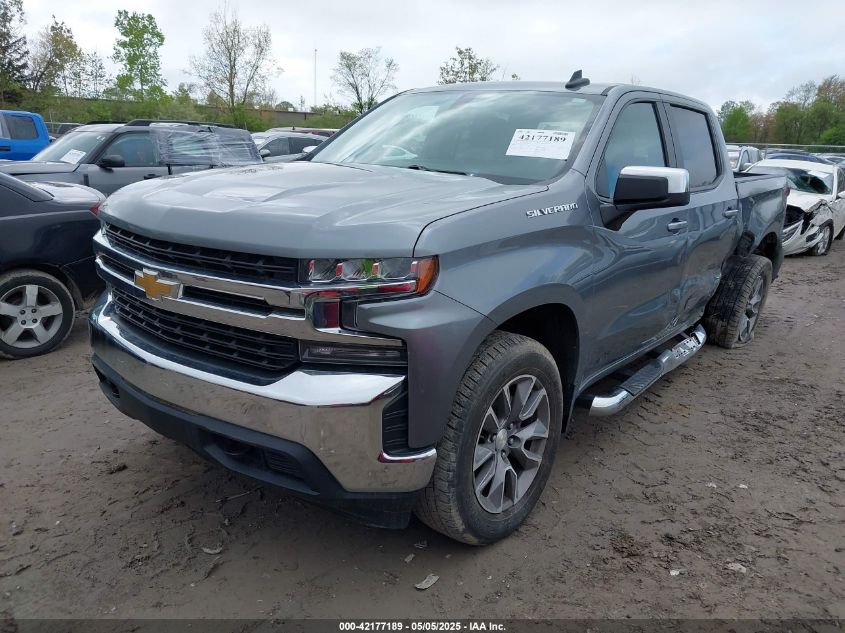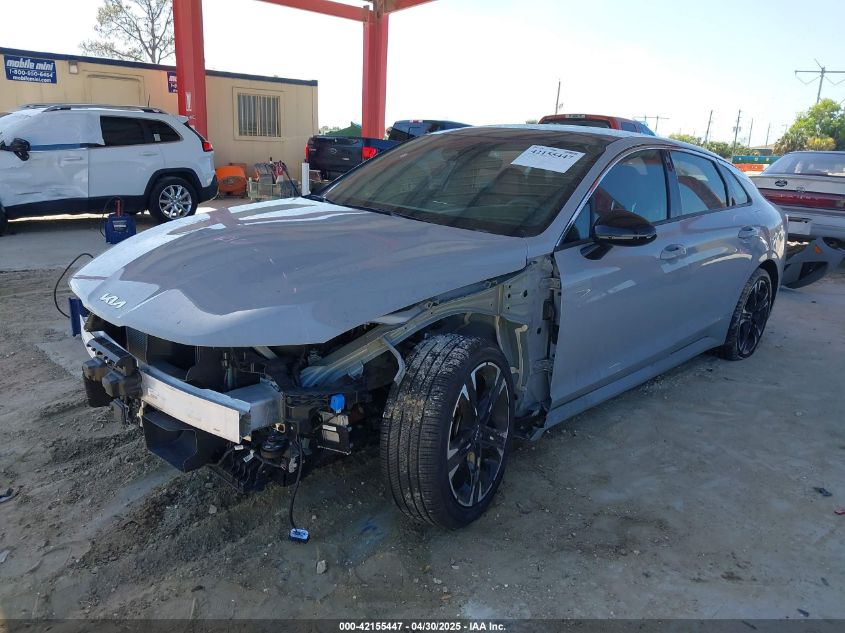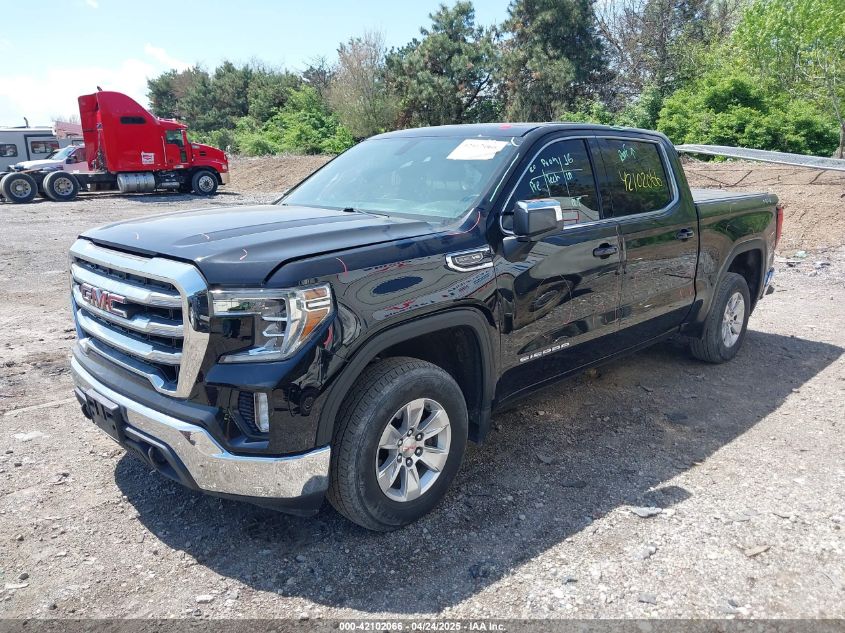2024 VOLKSWAGEN ATLAS | 1V2JR2CA5RC532574
Specifications
2
~$53,000
Engine: 2.0L turbocharged inline-4
Torque: 370 Nm
0–100 km/h: ~7.4 s
Although not a performance SUV, the Volkswagen Atlas and Atlas Cross Sport offer confident acceleration and surprising agility for a vehicle of their size. From 2024 onward, both body styles are powered by a revised 2.0L turbocharged inline-4 with 269 hp and 370 Nm of torque, paired with an 8-speed automatic transmission and available 4MOTION AWD. This drivetrain delivers a 0–100 km/h time of approximately 7.4 seconds, aided by a flat torque curve and improved throttle response.
The Atlas benefits from a solid MQB-based chassis and a carefully tuned suspension, providing precise on-center steering and composed body control, particularly in the Atlas Cross Sport with its shorter wheelbase and lower roofline. R-Line trims sharpen the feel with stiffer springs, paddle shifters, and sportier dampers. While not overtly athletic, the Atlas delivers secure cornering, high-speed stability, and composed road manners — ideal for family travel or highway touring with a touch of Euro-style responsiveness.
Body Styles
The Volkswagen Atlas, introduced in 2018 for the North American market, has been offered in two primary body types that cater to distinct segments within the midsize SUV category: the standard three-row Atlas and the two-row Atlas Cross Sport. Both versions share the same underlying platform (VW’s MQB architecture) but differ significantly in design focus, interior configuration, and market appeal.
The standard Volkswagen Atlas features a three-row SUV layout with seating for up to seven passengers, emphasizing family utility, interior space, and cargo versatility. It offers a traditional SUV silhouette with a tall, boxy roofline that maximizes headroom and third-row usability. The three-row Atlas is equipped with sliding second-row seats to allow easier access to the third row, and its wide-opening rear doors further enhance its family-friendly character. This version is designed for larger households or buyers who prioritize interior volume and practicality.
The Volkswagen Atlas Cross Sport, introduced for the 2020 model year, is a two-row SUV with a more dynamic, coupe-like profile. It trades the third-row seating for a more spacious second row and increased cargo area behind it, appealing to couples, smaller families, or buyers seeking a more aggressive and urban-focused design. The Cross Sport features a lower roofline, raked rear pillars, and a sleeker stance while maintaining the overall size and width of the standard Atlas. Though mechanically similar, its sportier proportions and bolder styling elements give it a more lifestyle-oriented character compared to the utility-driven standard version.
Together, the three-row Atlas and two-row Atlas Cross Sport represent Volkswagen’s dual approach to the midsize SUV segment — one prioritizing maximum versatility, the other targeting design-conscious buyers who don’t need the additional passenger capacity.
Model Name Meaning (Manufacturer)
“Atlas” refers to the mythological figure who carried the heavens on his shoulders, chosen to symbolize strength, size, and global purpose. “Cross Sport” denotes the sleeker, lifestyle-focused variant of the standard Atlas, with “Cross” reinforcing the crossover segment and “Sport” indicating its fastback design and youthful positioning.
Model Name Meaning (Languages)
“Atlas” is a globally understood name associated with navigation, strength, and maps. “Cross Sport” aligns with VW’s naming strategy for crossover derivatives (e.g. T-Cross, ID.4), clearly differentiating the sporty 2-row version from its 3-row sibling without using abstract alphanumerics.
Body & Interior Colors and Rims
The Volkswagen Atlas, spanning from 2018 through 2024, was designed to appeal to American sensibilities with its broad stance and bold proportions — traits reinforced by a carefully curated selection of body colors, interior finishes, and wheel designs that balance practicality with restrained elegance.
The body color palette throughout the Atlas’s lifecycle included a mix of timeless neutrals and rich, expressive finishes. Core shades such as Pure White, Deep Black Pearl, and Platinum Gray Metallic provided a clean, understated presence ideal for families and professionals alike. More vibrant offerings like Tourmaline Blue Metallic, Aurora Red Metallic, and Pacific Blue Metallic injected personality and a touch of sportiness into the lineup. As the model matured, newer hues like Pyrite Silver, Opal White Pearl, and Kings Red Metallic were introduced, often in tandem with refreshed grilles or LED lighting elements that sharpened the SUV’s visual identity. The more style-conscious Atlas Cross Sport body type made greater use of contrasting black accents and sculpted surfaces, pairing well with the bolder tones in the lineup.
Inside, the Atlas emphasized space, simplicity, and tactile clarity. Lower trims featured durable cloth upholstery in Titan Black or Sheppard Gray, with subtle textured inserts. Mid-tier trims like the SE introduced V-Tex leatherette, offering the look and feel of leather in colorways such as Titan Black, Mauro Brown, or Quartz Beige, depending on the exterior. Upper trims like the SEL Premium elevated the experience with genuine leather seating surfaces, contrast stitching, and metallic or faux wood dashboard inserts that added refinement without overwhelming the minimalist cabin design. The interior layout was anchored by horizontal lines and an intuitive, user-friendly interface, while available ambient lighting, digital instrumentation, and multi-zone climate controls contributed to a more premium experience in later models.
Wheels on the Atlas played a central role in defining its visual tone across trims. Base models rode on 18-inch alloy wheels with multi-spoke or twin-spoke designs in silver finishes that blended practicality with clean styling. Moving up the range, 20-inch wheels with machined faces, black pockets, or dynamic spoke layouts became standard on trims like the SEL and SEL R-Line, giving the SUV a broader, more planted look. The R-Line variants, especially in the Cross Sport configuration, received exclusive black or two-tone 21-inch wheels with angular, aggressive designs that underscored their sporty intentions. These rim options were carefully matched to fender cladding and trim details, creating a cohesive design language whether the buyer opted for utility, comfort, or street-savvy flair.
Taken together, the Volkswagen Atlas’s evolution in body color selection, interior trim sophistication, and wheel variety reflects a vehicle designed for North American versatility — approachable, confident, and increasingly refined over the course of its production.
Top Expensive Options
- SEL Premium R-Line Package (Leather, Ambient Lighting, 21” Wheels): $5,200
- 12" Digital Cockpit Pro + Integrated Navigation: Standard (SEL+)
- 10-Way Power Massaging Front Seats with Ventilation: $1,200
- Harman Kardon Premium Audio System (12 speakers): $900
- IQ.DRIVE Package (ACC, Lane Assist, Emergency Assist): Standard (SEL)
- Panoramic Sunroof with Power Sunshade: $1,200
- Heated/Ventilated 2nd-Row Outboard Seats (Captain’s Chairs): $650
- Power Hands-Free Liftgate with Kick Sensor: $400
- 360° Area View Camera with Parking Assist: $850
- Trailer Hitch with 5,000 lb Capacity + Trailer Brake Controller: $550
vs Competitors
The Atlas and Cross Sport compete with the Honda Pilot, Toyota Highlander, Chevrolet Traverse, Ford Explorer, Kia Telluride, Hyundai Palisade, and Jeep Grand Cherokee (Cross Sport vs 2-row GC). Compared to the Highlander and Pilot, the Atlas offers more passenger/cargo space, a smoother ride, and more mature styling. Against the Telluride and Palisade, it matches on features but adds a European driving feel and cleaner interior design. The Jeep may offer more off-road hardware, but the Atlas delivers better efficiency, space, and user-friendly tech. Overall, the Atlas balances German refinement, American size, and modern versatility, while the Cross Sport appeals to buyers wanting style and space without a third row.
Fun Fact
The Atlas is the largest vehicle Volkswagen has ever built for the North American market and was developed specifically for U.S. tastes, unlike most VW models. It’s built in Chattanooga, Tennessee, and shares its MQB architecture with much smaller cars like the Golf — showcasing the platform’s scalability. The Atlas Cross Sport was introduced in 2020 to capture the fast-growing 2-row SUV segment, and its more aggressive look now represents over 40% of total Atlas sales, proving that style-focused crossovers are more than just niche.
Lot Details
-
Sale Date19/May/2025
-
Lot Number41640988
-
Sale document
-
Location
-
Odometer24,048 miles
-
Primary Damage:FRONT END
-
Seller
-
Fuel
-
Engine Type2.0L I-4 DI, DOHC, VVT, turbo, 269HP
-
Transmission
-
Drive Type
-
Color
Final Bid Volkswagen Atlas (2024)
$10,100
$17,584
$33,250
Specifications
2
~$53,000
Torque:
0–100 km/h:
Although not a performance SUV, the Volkswagen Atlas and Atlas Cross Sport offer confident acceleration and surprising agility for a vehicle of their size. From 2024 onward, both body styles are powered by a revised 2.0L turbocharged inline-4 with 269 hp and 370 Nm of torque, paired with an 8-speed automatic transmission and available 4MOTION AWD. This drivetrain delivers a 0–100 km/h time of approximately 7.4 seconds, aided by a flat torque curve and improved throttle response.
The Atlas benefits from a solid MQB-based chassis and a carefully tuned suspension, providing precise on-center steering and composed body control, particularly in the Atlas Cross Sport with its shorter wheelbase and lower roofline. R-Line trims sharpen the feel with stiffer springs, paddle shifters, and sportier dampers. While not overtly athletic, the Atlas delivers secure cornering, high-speed stability, and composed road manners — ideal for family travel or highway touring with a touch of Euro-style responsiveness.
Body Styles
The Volkswagen Atlas, introduced in 2018 for the North American market, has been offered in two primary body types that cater to distinct segments within the midsize SUV category: the standard three-row Atlas and the two-row Atlas Cross Sport. Both versions share the same underlying platform (VW’s MQB architecture) but differ significantly in design focus, interior configuration, and market appeal.
The standard Volkswagen Atlas features a three-row SUV layout with seating for up to seven passengers, emphasizing family utility, interior space, and cargo versatility. It offers a traditional SUV silhouette with a tall, boxy roofline that maximizes headroom and third-row usability. The three-row Atlas is equipped with sliding second-row seats to allow easier access to the third row, and its wide-opening rear doors further enhance its family-friendly character. This version is designed for larger households or buyers who prioritize interior volume and practicality.
The Volkswagen Atlas Cross Sport, introduced for the 2020 model year, is a two-row SUV with a more dynamic, coupe-like profile. It trades the third-row seating for a more spacious second row and increased cargo area behind it, appealing to couples, smaller families, or buyers seeking a more aggressive and urban-focused design. The Cross Sport features a lower roofline, raked rear pillars, and a sleeker stance while maintaining the overall size and width of the standard Atlas. Though mechanically similar, its sportier proportions and bolder styling elements give it a more lifestyle-oriented character compared to the utility-driven standard version.
Together, the three-row Atlas and two-row Atlas Cross Sport represent Volkswagen’s dual approach to the midsize SUV segment — one prioritizing maximum versatility, the other targeting design-conscious buyers who don’t need the additional passenger capacity.
Model Name Meaning (Manufacturer)
“Atlas” refers to the mythological figure who carried the heavens on his shoulders, chosen to symbolize strength, size, and global purpose. “Cross Sport” denotes the sleeker, lifestyle-focused variant of the standard Atlas, with “Cross” reinforcing the crossover segment and “Sport” indicating its fastback design and youthful positioning.
Model Name Meaning (Languages)
“Atlas” is a globally understood name associated with navigation, strength, and maps. “Cross Sport” aligns with VW’s naming strategy for crossover derivatives (e.g. T-Cross, ID.4), clearly differentiating the sporty 2-row version from its 3-row sibling without using abstract alphanumerics.
Body & Interior Colors and Rims
The Volkswagen Atlas, spanning from 2018 through 2024, was designed to appeal to American sensibilities with its broad stance and bold proportions — traits reinforced by a carefully curated selection of body colors, interior finishes, and wheel designs that balance practicality with restrained elegance.
The body color palette throughout the Atlas’s lifecycle included a mix of timeless neutrals and rich, expressive finishes. Core shades such as Pure White, Deep Black Pearl, and Platinum Gray Metallic provided a clean, understated presence ideal for families and professionals alike. More vibrant offerings like Tourmaline Blue Metallic, Aurora Red Metallic, and Pacific Blue Metallic injected personality and a touch of sportiness into the lineup. As the model matured, newer hues like Pyrite Silver, Opal White Pearl, and Kings Red Metallic were introduced, often in tandem with refreshed grilles or LED lighting elements that sharpened the SUV’s visual identity. The more style-conscious Atlas Cross Sport body type made greater use of contrasting black accents and sculpted surfaces, pairing well with the bolder tones in the lineup.
Inside, the Atlas emphasized space, simplicity, and tactile clarity. Lower trims featured durable cloth upholstery in Titan Black or Sheppard Gray, with subtle textured inserts. Mid-tier trims like the SE introduced V-Tex leatherette, offering the look and feel of leather in colorways such as Titan Black, Mauro Brown, or Quartz Beige, depending on the exterior. Upper trims like the SEL Premium elevated the experience with genuine leather seating surfaces, contrast stitching, and metallic or faux wood dashboard inserts that added refinement without overwhelming the minimalist cabin design. The interior layout was anchored by horizontal lines and an intuitive, user-friendly interface, while available ambient lighting, digital instrumentation, and multi-zone climate controls contributed to a more premium experience in later models.
Wheels on the Atlas played a central role in defining its visual tone across trims. Base models rode on 18-inch alloy wheels with multi-spoke or twin-spoke designs in silver finishes that blended practicality with clean styling. Moving up the range, 20-inch wheels with machined faces, black pockets, or dynamic spoke layouts became standard on trims like the SEL and SEL R-Line, giving the SUV a broader, more planted look. The R-Line variants, especially in the Cross Sport configuration, received exclusive black or two-tone 21-inch wheels with angular, aggressive designs that underscored their sporty intentions. These rim options were carefully matched to fender cladding and trim details, creating a cohesive design language whether the buyer opted for utility, comfort, or street-savvy flair.
Taken together, the Volkswagen Atlas’s evolution in body color selection, interior trim sophistication, and wheel variety reflects a vehicle designed for North American versatility — approachable, confident, and increasingly refined over the course of its production.
Top Expensive Options
- SEL Premium R-Line Package (Leather, Ambient Lighting, 21” Wheels): $5,200
- 12" Digital Cockpit Pro + Integrated Navigation: Standard (SEL+)
- 10-Way Power Massaging Front Seats with Ventilation: $1,200
- Harman Kardon Premium Audio System (12 speakers): $900
- IQ.DRIVE Package (ACC, Lane Assist, Emergency Assist): Standard (SEL)
- Panoramic Sunroof with Power Sunshade: $1,200
- Heated/Ventilated 2nd-Row Outboard Seats (Captain’s Chairs): $650
- Power Hands-Free Liftgate with Kick Sensor: $400
- 360° Area View Camera with Parking Assist: $850
- Trailer Hitch with 5,000 lb Capacity + Trailer Brake Controller: $550
vs Competitors
The Atlas and Cross Sport compete with the Honda Pilot, Toyota Highlander, Chevrolet Traverse, Ford Explorer, Kia Telluride, Hyundai Palisade, and Jeep Grand Cherokee (Cross Sport vs 2-row GC). Compared to the Highlander and Pilot, the Atlas offers more passenger/cargo space, a smoother ride, and more mature styling. Against the Telluride and Palisade, it matches on features but adds a European driving feel and cleaner interior design. The Jeep may offer more off-road hardware, but the Atlas delivers better efficiency, space, and user-friendly tech. Overall, the Atlas balances German refinement, American size, and modern versatility, while the Cross Sport appeals to buyers wanting style and space without a third row.
Fun Fact
The Atlas is the largest vehicle Volkswagen has ever built for the North American market and was developed specifically for U.S. tastes, unlike most VW models. It’s built in Chattanooga, Tennessee, and shares its MQB architecture with much smaller cars like the Golf — showcasing the platform’s scalability. The Atlas Cross Sport was introduced in 2020 to capture the fast-growing 2-row SUV segment, and its more aggressive look now represents over 40% of total Atlas sales, proving that style-focused crossovers are more than just niche.

